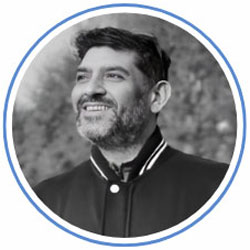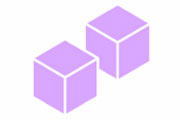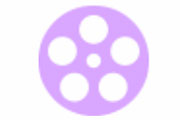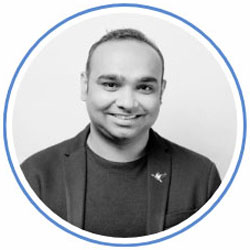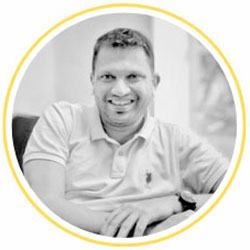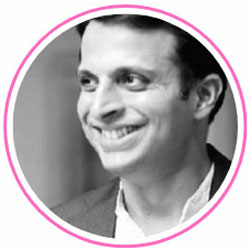Before Syngrity
Syngrity started in 2002 as an afterthought to my experiences at GE Capital International Services where I worked from 2000 to 2002. GE, or GECIS, as it was called in India back then, gave me an opportunity to learn in a way I have never learnt before and has laid the foundation of my work at Syngrity for the last 20 years.
However, along with these incredible learning opportunities at GE, came multiple questions and the desire to look at the world of L&D differently.
For example, one of the first things that I was ever taught when I was being trained to be a trainer was that you never speak about political, religious, and sexual opinions of people. I found this ‘wall’ very troubling. I strongly believe that shifts in behaviours, attitudes and perceptions must address such core issues, identities and thought processes or at least open them up for dialogue.
However, GE was much bigger than what I thought was the ‘right way’ and it made more sense to keep quiet about it and not rock the apple cart.
While at GE, I was also playing the Australian didgeridoo and was fascinated by the effects of sound on the brain. I started to listen to Gregorian chants and an African rhythm by an artist called Geoffrey Oryema. Studies have shown that listening to these voices and music allow the brain to switch from beta (conscious) to alpha (subconscious).
I experimented with this and noticed that while I played this kind of music, the retention levels of the participants increased significantly (additionally, as a trainer, your worst enemy in a session is silence, I needed the music so that I did not get bored with my own voice!)
The word got around that my sessions were ‘different’. But GE management did not believe in what I believed in, understandably so, as the research on the effect of sound on the brain, at least the modern research, was still in its nascent stages.
Primary Influences
While I was at GE, I introduced the Human Resources team to my teacher for the last 24 years – Mr. Rashid Ansari, a well renowned name in the martial arts and theatre world. He facilitated multiple workshops on understanding what stress does to the body and how you can address them through energy systems, movement, dance and other alternative practices. Although, I must say, many of these alternative practices from the east were unknown to the western thought process and all of us at GE were very much a part of the latter and very ‘American’ (I was Vik Chrysler). Regardless, in 20 years of running Syngrity, I can very confidently say that GE was one of the first organizations that were really interested in the wellness of their employees.
Around the same time, I met an outsourced vendor (as we are referred to by the industry), Dr. Arjun Raina; a Kathakali dancer who performed Shakespeare through Kathakali. He trained at the Royal Shakespeare Society in the UK and had been trained by the best teachers over there. He was hired to train us in phonology and Standard English sounds. I got trained in the same techniques as some great actors like Sir Sean Connery, Naseeruddin Shah etc. Somewhere towards the end of the training, he told me that the day I quit my job at GE, I should come straight to him.
While open to new ideas, at GE there was still a lot of resistance and I was not allowed to do what I wanted to do – which was to be able to enhance the learning experience. I was frustrated and began marinating with the thought of starting my own company. There was one particular day that I woke up at home and found myself quite anxious because I had seen a dream where somebody asked me if this is what I wanted, referring to my work at GE, and the answer was no. In fact, one day whilst at Rashid Ansari’s place sipping on some vodka, my tongue fumbled while we spoke of some values that martial arts emphasises. We were talking about the importance of integrity and synergy when the fumble happened and out came ‘Syngrity’. I decided to put in my papers at GE.
Birth of Syngrity
The day I quit GE, I went straight to Arjun’s house. I rang the bell and he came out in a Kathakali costume because he was rehearsing for a performance. He asked me why I was there. I told him I was done with GE and free to work with him. Arjun along with his childhood friend Ashim Ghosh – a brilliant speaker, teacher and multimedia artist – ran Peach Communications. This is where I learned some brilliant teaching skills and learned about teaching through audaciousness. We often experienced pushback from the corporate hegemony; the relationship between organisations and training vendors was very feudal (and this continues to be the case). Usually, companies push us vendors in to watertight contracts. Recently I pushed back with a client to honour our written contract and I was told that no vendor ever does that. Sigh.
But what started was a remarkably interesting journey of learning, sharing, and teaching communication skills specifically voice, listening and speaking. We were training all over the country with multiple organizations and constantly resisting their demands to make employees sound American or English. We did not see the need to make Indians sound American or English (our focus was to get people to understand and listen better). Organisations were not willing to take responsibility for the sociocultural impact that having aliases and speaking with an accent has on people, many of whom are from tier 3 and tier 4 cities.
It took a couple of years for organizations to even start comprehending what we were talking about. Some listened and some did not.
At some point when the call centre industry had peaked, I realised that a lot of the training was going to become standardised – something I did not agree with.
So far, I was able to create an impact in the minds of people on how they look at language, sound and culture. This was the time to increase my repertoire and I started writing what culminated into a training manual called “I Am Customer Service”.
This workbook spoke about looking at ourselves as people and what the customer service industry means to us. I wrote it across 16 chapters and trained over 4000 people in it. One of the biggest criticisms I received from a client (which I disagreed with) was that I created ‘A players’ (top performers) and the industry does not work on ‘A players’ it works on ‘B players’ (worker ants). I made the decision to not work with that client again. Some well-wishers called this a mistake because of the loss of revenue but I needed to reflect.
Sometime early in my journey as a facilitator, I certified myself as an experiential educator because I was fascinated by the outdoors. As an army kid, I experienced the outdoors a lot and one important thing I learnt during my certification was that the best time to reflect is when you are physically so exhausted that your mind does not look at anyone or anything else except inwards in silence and in sync with our own breath. It was fascinating. The thought processes in experiential education allow you to dig deeper into a person’s subconscious in a very non-threatening or non-invasive way.
However, not every client wanted to or had the budget to take people outdoors all the time. This was the time I started looking at learning outcomes through playing music together. As a percussionist, who at some point in time has played commercially, I realised that it was not about playing music together at the same time, or at the same volume. Rather. It was about every musician playing a part at a certain time that contributed to and supported the whole. That is what created the music instead of a cacophony. So, I started documenting the process in drum circles and ended up pioneering drum circles or what we call the Percussion Workout in India.


In the meantime, I read a book called Blue Ocean Strategy which was released in 2006. Once again, I was fascinated because it went against the norm. It spoke about finding newer markets in blue oceans. It spoke about expanding your mind. It spoke about moving your mental canvas. I was discussing this idea of the Blue Ocean with dancer and actor friend Charu Shankar and she suggested that we use the idea of a canvas as the blue ocean and the body as the brush through which we express ourselves. And that was the starting point of Moving Canvases. Today we use Moving Canvases as a human lab to foster a sense of creativity, innovation and brainsailing to deconstruct real issues that teams face.


In 1998 I was taught how to walk on fire by a “pir”, who I met at Jama Masjid. Over a period of three days, he taught me how to set the pit, and how to walk over a hotbed of coals. While I had experienced firewalking a few times I needed to make sense of what the intervention was going to do in terms of reflection and reviewing. The success and heart of every experiential intervention lies in reflection and introspection. If the reflection and introspection are not there then it is just an event.


In fact, that was one thing I did not envisage – people inviting Syngrity to conduct ‘events’. It meant revenue but no satisfaction and definitely no synergy and integrity. So, we started saying no to the demands of just events. Further, if a company asked us to do an intervention without reflection, we demanded three times our usual fee to compensate for the loss of our integrity. The message went out and was very clear.
Slowly we started creating a reputation for ourselves as a creative solutions provider. Our reflective processes and our ability to draw inspiration out of multiple disciplines became our USP.
Soon after, the recession of 2008 happened. Everything stopped and there was no work. That is the time that I also read the Chaos Theory. I was anyway fascinated by joining behavioural dots, so I created a unique module for understanding change. This is where I credit myself for having a ‘never say die’ attitude because the other option was to shut shop and take up a job. So, I trained people to brace for change. They saw value in understanding change as a pattern and that helped Syngrity survive the recession.
Around this time, I moved back to Delhi (up until then I used to live in Pune) and the economy slowly started coming back on track with experiential interventions resuming again.
Somewhere around 2014, I contacted an old colleague from GE and she introduced me to The Talent Enterprise based out of Dubai. They create diagnostic assessments based on positive psychology – a field that I was interested in. We started using their psychometric tool –The Thriving Index – and started weaving the insights with experiential interventions especially Theatre of the Self – one of our signature programs using improvisational theatre. We travelled the world demonstrating how communication, collaboration, agility, and creativity could be identified and enhanced using improv theatre.




Our work started getting recognised once again not just as an experiential organization but also as a group of people who could give multi-disciplinary suggestions around how to make learning impactful as well as fun. These are small successes but especially important for an entrepreneur to keep going. One of the key successes of entrepreneurship is in celebrating small successes and as my teacher, Rashid Ansari told me, ‘One needs to be friends with hunger.’
Having practised multiple martial arts for the last 26 years, sometime in 2018, I wrote Warrior’s Path where I talked about my learning from martial systems. I was initially reluctant because I was not sure if I was ready to share what I learned via my teachers – author and ex-Olympic gymnast Dan Millman via his book, ‘Way of the Peaceful Warrior’, Miyamoto Musashi ‘Book of Five Rings’, Yamamoto Tsunitamo ‘Hagakure’ and books like the ‘Bodhisatva Warriors’, ‘Loving What is’, ‘The Art of War’ and many others.


At this juncture, we made a mistake and partnered with a Bangalore-based travel company and a government-recognised adventure foundation. We were taken for a ride financially and it left a horrible taste in our mouth. Also, we left to test the Warrior’s Path on the Everest Base Camp and ended up reaching Annapurna Base Camp. We couldn’t fly to Lukla because of the weather and immediately decided to trek to Annapurna Base Camp. The experience was exhilarating; the partnership was not.
And that is why I realised how much we value our partnership with Aquaterra Adventures – one of India’s oldest and safest adventure experience providers. They have the best and safest infrastructure on any river or mountain in the country. We have worked with them for the last 15 years in organising some of our most avant-garde offsites in Uttarakhand. Imagine an unplugged sitar recital on a deserted beach on the upper Ganga!


Now we take multiple organisations for 3–4day learning journeys through an arduous terrain either on land or water deconstructing the person from the persona revealing the underlying emotions and what we really desire. We are about to launch the next Warrior’s Path.
And then Covid happened in 2020. Once again everything stopped and this time, we did not know what the future held. Everything moved to the virtual space and suddenly everyone in the industry thought it was okay to approach us and the other service providers to start doing virtual workshops for free. This kept happening and I started getting triggered because it was going to spoil industry standards. I called for a meeting with fellow learning providers. All of us unanimously decided that we were not going to give in to the ambiguity of our future and do workshops for free.
In the midst of the pandemic, Syngrity started working for a large IT firm helping develop their female middle-management talent. This was a relief because work had slowed down; not stopped, but slowed down. We also started working on a role-based leadership initiative for them which involved working 14 hours a day. In fact, it was during the pandemic that I was the busiest I’ve ever been, working 14 hours a day for at least two and a half months in Syngrity as well as in my security firm because we came under the Disaster Management Act and the Essential Services and Maintenance Act.
Syngrity Today
The hard work paid off and our client won 2 Brandon Hall Gold awards for the programs we supported them with. A huge kudos to them for running the program internally and a small part of that kudos to us to be able to share our skills and knowledge with our clients. If there is one thing that is at the core of our work it has to be an attitude of gratitude and finding balance. While we are highly skilled at what we do, it has been our customers and clients who have trusted us to create a meaningful journey for their teams and companies.
We have always had to push back; sometimes our clients, sometimes people who can’t take suggestions, and sometimes we push ourselves back to think and reflect and then eventually ask the right questions. It has been a fulfilling journey for us; the beginning of the next 20 years looks promising.
Syngrity Tomorrow
For now, we are gearing towards making Syngrity relevant for the next five to eight years. This is the time for us to think, to create, co-create and stretch our own mental canvases.
I do not forget UBUNTU – a lovely concept from Africa which means, ‘I am because we are’. This is the time to create an ecosystem of allyship where we can all thrive while working together irrespective of gender, race, religious differences etc. not only in teams and organizations but also as a human race.

 Vikram Badhwar, CEO, Syngrity, is a communications coach, an experiential educator, and an artist trying to bridge the gap between the creative and the analytical side of our brain. He consults individuals and teams in the space of learning & development to enable transformations at a personal, professional and organizational level.
Vikram Badhwar, CEO, Syngrity, is a communications coach, an experiential educator, and an artist trying to bridge the gap between the creative and the analytical side of our brain. He consults individuals and teams in the space of learning & development to enable transformations at a personal, professional and organizational level.







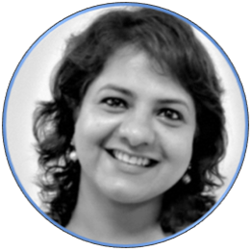 MALATI VASUDEVA
MALATI VASUDEVA VIKRAM BADHWAR
VIKRAM BADHWAR PRIYANKA KUMAR
PRIYANKA KUMAR SUMAL VARGHESE
SUMAL VARGHESE

